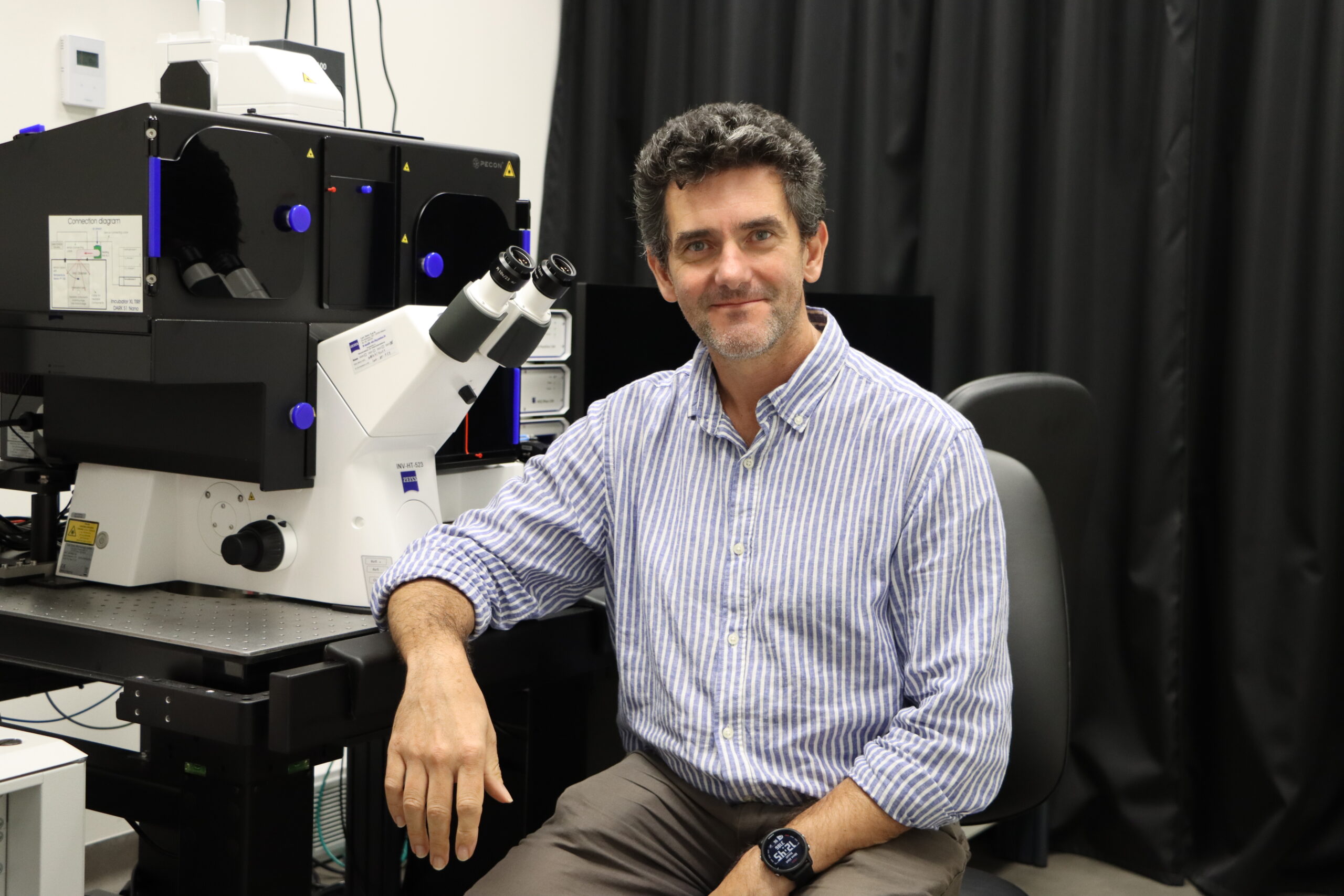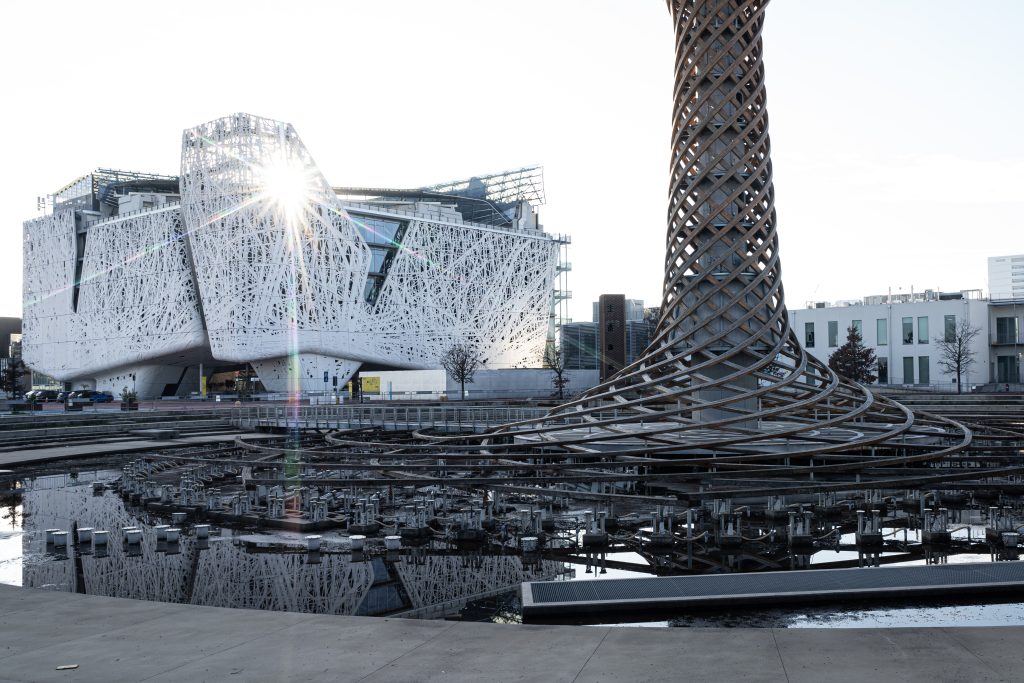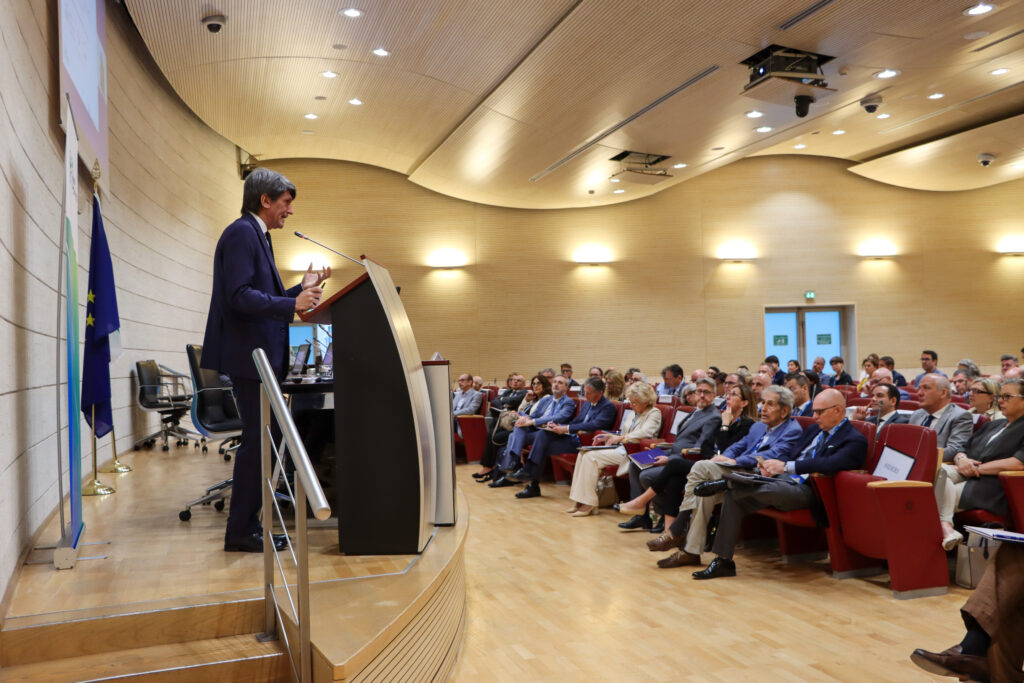The National Facility for Light Imaging with Nicola Maghelli

Meet Nicola Maghelli, Head of the National Facility for Light Imaging at Human Technopole. The National Facility for Light Imaging is equipped with several high-end microscopy systems and instruments that enable both internal and external scientists to explore the microscopic world by imaging single cells and their components with high spatial and temporal resolution, potentially enhancing our understanding of diseases and paving the way for new therapies.
Nicola, tell us about your background: what inspired you to pursue a career in life sciences research?
I have always been fascinated by understanding how things work: that led me to pursue a study course in physics. After my bachelor, I moved to Germany where I started developing microscopes, at first mostly for material science applications. I then started collaborating with biologists and began developing microscopes for biological applications, and that was the start of my career as a microscopist!
Can you share a memorable or influential experience from your career that has had a lasting impact on your professional development? Are there any specific sources of inspiration or role models that have influenced your journey?
I don’t have any single memorable moment: rather, the continuous interaction with outstanding colleagues from many different fields has had a great influence on my professional development. I am a strong supporter of interdisciplinarity, and I believe in stepping out of our “scientific comfort zone”: I think that dealing with projects which seem at first abstruse because very distant from our scientific background is fundamental to broaden our scientific vision, and I find it very rewarding when one finally manages to glimpse the “bigger picture”!
Can you describe a time when you faced a significant challenge or setback in your career, and how you overcame it? What did you learn from that experience?
At the end of my post-doc, the project I had invested years of work in was not delivering the results I hoped for. This generated frustration and a sense of un-accomplishment, which in turn led me to rethink the professional choices I had made. I think I could say that this setback forced me to consider alternatives which I did not have the time to properly explore before: now I know that although a setback might be perceived as a failure, it can be the right occasion to react and reinvent yourself.
Tell us about the National Facility for Light Imaging. Could you briefly explain its objectives and goals?
The National Facility for Light Imaging is committed to supporting science by providing our users with the best available technologies, ranging from imaging to sample preparation, flow cytometry and ion imaging. Our staff has world-class experience in providing services about and around imaging, and we are sure that HT facilities will have a great impact on the Italian scientific community.
Can you share any upcoming projects or initiatives that the NF is planning to undertake?
As you know, the Facility is already offering the most advanced microscopy techniques which are commercially available, but we want to offer our users even more than that! In fact, we are working to include experimental microscopy techniques in our palette of services. That means, our users will be able to profit from bleeding edge imaging technologies, something that exists only in research labs and is typically difficult to access. Not only that: our custom microscopy unit will be the ideal place to develop original technologies and foster collaboration with academic and commercial partners.
How does the NF contribute to advancements for human health and technology?
In the NF for Light Imaging we visualize biology in action: seeing how a living sample behaves, grows and reacts to external stimuli is fundamental to understanding how the intricate processes governing life itself work. With our technologies we can open a window into the microscopic world, imaging single cells and their components at a spatial and temporal resolution which enables the researchers to gain new insights, potentially leading to a better understanding of diseases and opening the way to new therapies.
What are the main challenges you face leading a NF, and how do you overcome them?
The National Facilities initiative is a novelty: we are still setting up the whole administrative and technical process and there are so many details to define. Luckily, HT has a very capable team and that makes things much easier. Still, as facility heads we are putting in a lot of effort: I do believe that we will be able to make a significant impact on the Italian scientific community and this is my main motivation to overcome all the challenges we are facing.
How do you maintain a work-life balance while leading a NF? Are there any strategies you find helpful in managing your time effectively?
I cannot deny that work-life balance is hard to maintain, especially in this start-up phase where there are thousands of topics to be addressed. My colleagues and I are fully busy preparing to offer our services to the community, and there are days where my schedule is really packed. I would be completely unable to maintain a decent work-life balance if I would not have a partner with whom I can coordinate: we share our duties and we manage to balance work and life optimally. Still, sometimes we have to prioritize: it is generally not possible to have a perfect work-life balance!
What are some emerging trends or technologies in your research field that you find particularly exciting or promising for future research?
There are several technologies which are worth keeping an eye on: speaking about imaging, I would say a notable one is super-resolution imaging. Not long ago, the diffraction limit was thought to be the ultimate barrier one would encounter when trying to image at higher and higher magnifications. This meant having a maximum achievable resolution which was around 200 nm, or 1/300 of a human hair, anything smaller would remain blurred and out of reach. Now, biologists have access to technologies which allow to reach resolutions below 10 nm! I think this is fascinating and will offer new insights into the molecular mechanisms at the foundation of biology. Another emerging technology is the advent of artificial intelligence: AI has already proven to be such a powerful technology in many fields (think about ChatGPT!), but applied to imaging in life science it has the potential to revolutionize the entire field. This is already happening, and we are only starting to discover what AI can do when applied to biomedical images.
What advice would you give to young researchers who aspire to become leaders in the field of life sciences?
Keep your mind open! Look around, talk to other researchers, be curious of what happens outside your field… becoming a leader involves not only knowing how to do your science: you have to interact with people, understanding their unique way of expressing themselves, communicating your thoughts in a clear and straightforward way… then you have to learn how to prioritize and organize your work and the work of your team.
How did you first hear about Human Technopole? What attracted you to apply here?
I first heard about Human Technopole when colleagues of mine applied here: I gave a look at the mission and found it compelling, so I decided to ask more details. I also wanted to contribute to the Italian community in first person after having spent most of my scientific career abroad, so when the occasion came, I applied and here I am!
Outside of your research and work responsibilities, do you have any hobbies or interests?
I am a runner and I enjoy going out for a run as often as I can! Besides, I am a skipper and together with friends from time to time we rent a boat and spend some nice time at sea. I also play guitar and, after studying few years at the conservatory, I started playing in a band with friends and did my fair share of gigs around pubs, back in the days… I also like astrophotography and I have a telescope, which unfortunately does not see much action these days!
What do you think you would be if you were not a scientist?
This is a tough one! Honestly, I don’t know: at the end of high school I applied in the Italian Air Force, but eventually decided not to enroll. If things would have been different, maybe that could have been my career now…



